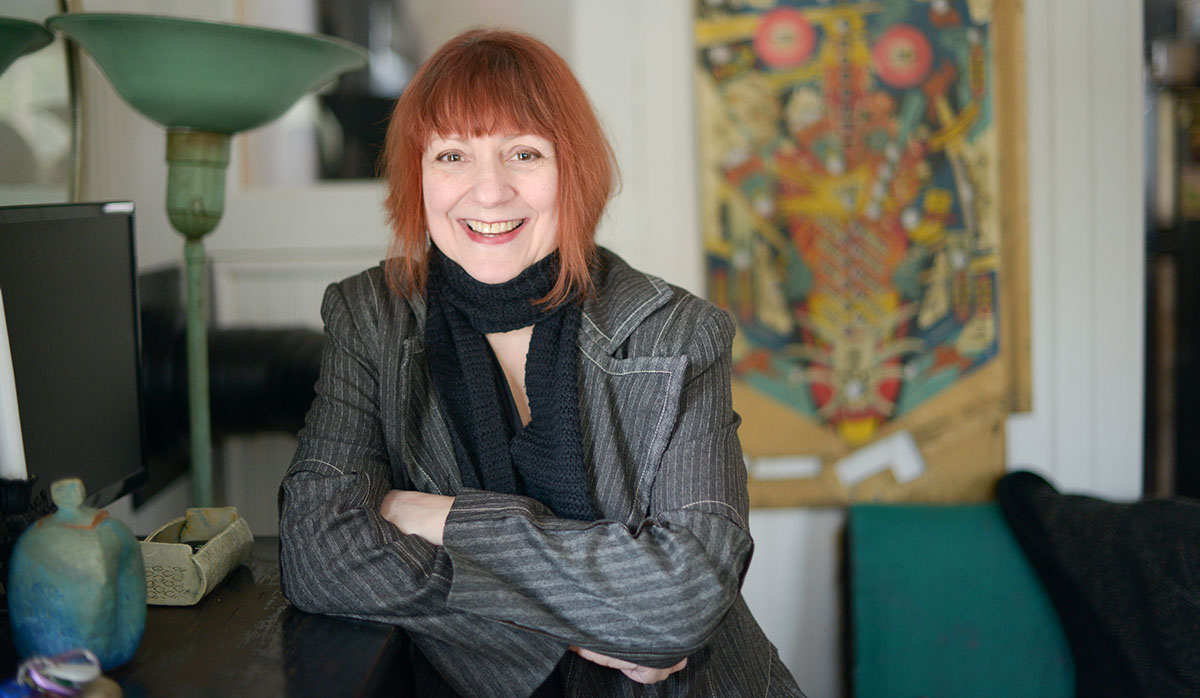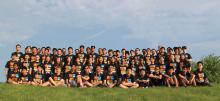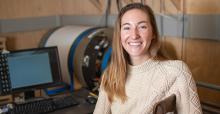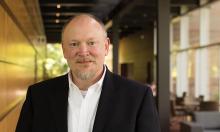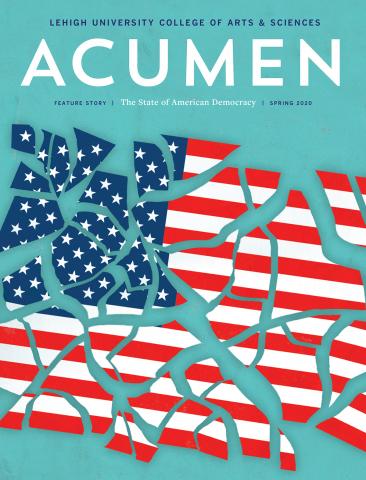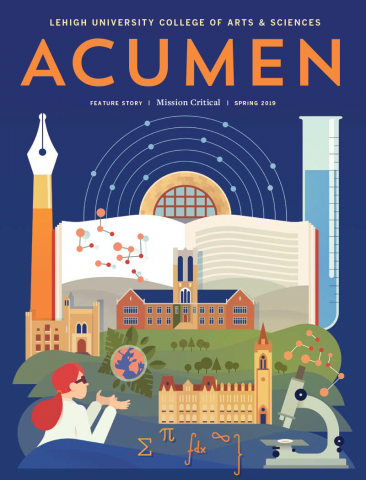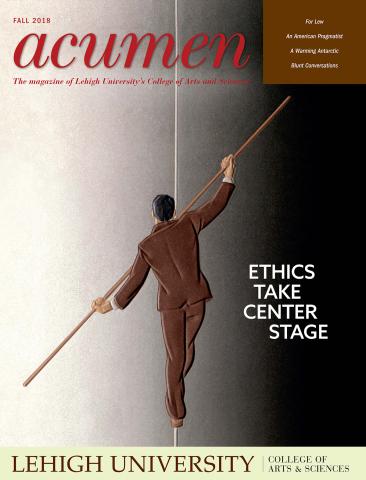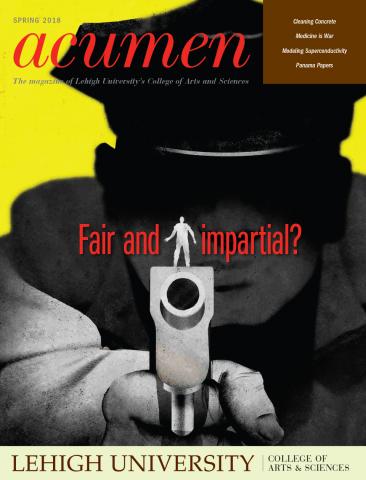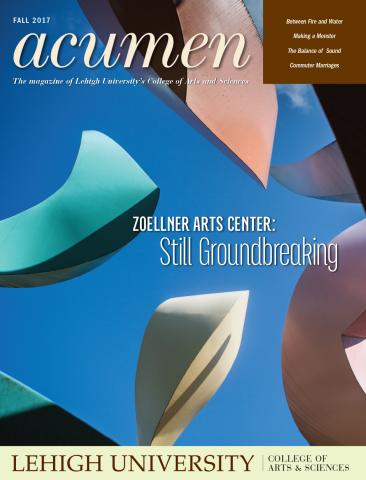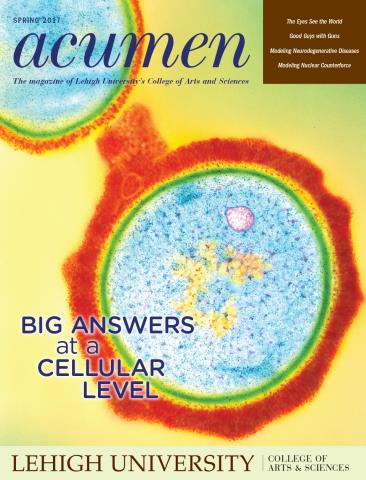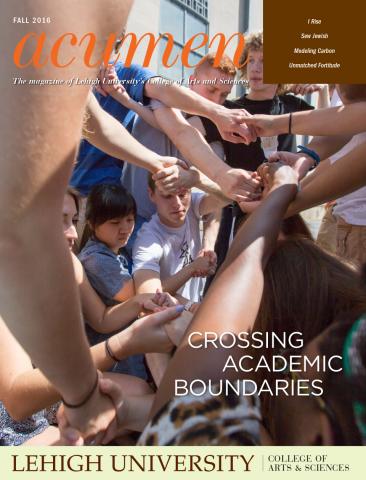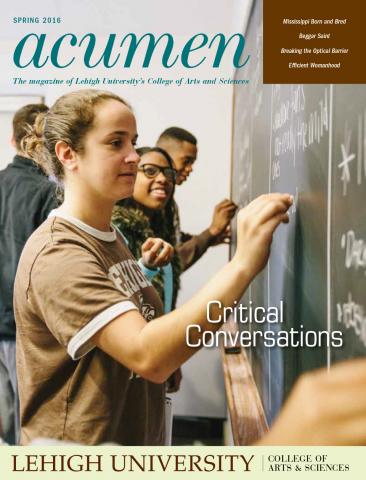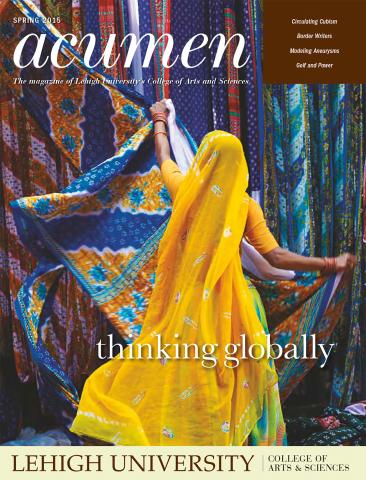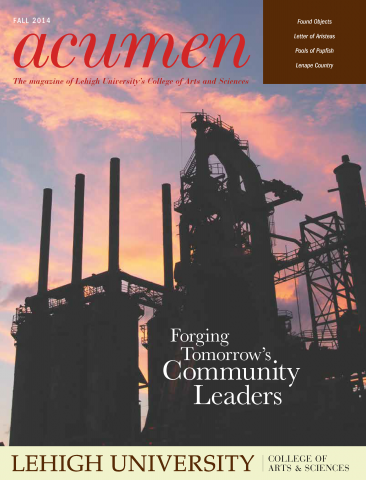
The role and importance of graduate education in Lehigh’s College of Arts and Sciences can be summed up in two words that pack a pretty powerful punch: mission critical.
In fact, the university as a whole has two central missions—instruction and research—and graduate students are an integral part of being successful in both of them, according to Dominic Packer, associate dean for research and graduate programs in the College of Arts and Sciences.
“Research is increasingly at the forefront of what we are trying to do, and graduate students are a critical part of that, especially when you are talking about the doctoral programs,” Packer explains. “It’s what makes us a serious research college. Not every discipline needs it, but many disciplines do. You can’t say you are a research-oriented physics program unless you do research.
“And, it’s that kind of research that raises the intellectual environment in the college and the university overall,” he says.
In fact, it was the ability to dive right into the research aspect of her degree that attracted physics doctoral candidate Courtney Au-Yeung to Lehigh.
“My boyfriend and I were both offered fellowships for our first year at Lehigh, and I had previously completed an REU, research experience for undergraduates, here at Lehigh, so I was already familiar with the program,” Au-Yeung explains. “Lehigh provided us the opportunity to attend the same university and start our research right away during our first year of grad school.”
Graduate students also play a critical role in instruction university-wide, Packer says, adding that the teaching assistants in the College of Arts and Sciences who serve Lehigh’s undergraduate teaching mission work with almost every first-year undergraduate at Lehigh, whether teaching freshman English, running science labs or handling recitations for calculus sections.
 For Sarita Mizin, a doctoral degree candidate in the English department, it was Lehigh’s faculty and the funding opportunities available that attracted her to the university.
For Sarita Mizin, a doctoral degree candidate in the English department, it was Lehigh’s faculty and the funding opportunities available that attracted her to the university.
“I knew there were great faculty members in the English department here doing public-facing humanities work,” she explains. “That, along with graduate funding offered through teaching opportunities and fellowships, was a big part of why I decided to come to Lehigh.”
Mizin says her research “offers a global account of first-wave women’s politics by addressing [late 19th century] women’s literary practices as a kind of knowledge production ‘by women, for women’ with transnational outreach.”
Mizin is studying female authors like Rokeya Sakhawat Hossain and Sara Jeanette Duncan, who were often criticized for being “too derivative” in their writing. She argues that they were not trying to mimic popular authors like Rudyard Kipling, but instead were attempting to craft new narratives for an emerging audience of women readers.
“The most interesting part of this effort are the comparative gestures authors like (Pandita) Ramabai and Rokeya (Sakhawat Hossain) made to support women’s issues across national and imperial borders,” Mizin explains. “They were not just thinking about themselves. In this way, their transnational thinking about gender, nation, caste and race can be viewed as a kind of intellectual ancestor to today’s intersectional feminisms.”
Mizin honed in on her dissertation topic while auditing a course taught by Suzanne Edwards, associate professor of English.
“After thinking through multiple project ideas, I found Pandita Ramabai’s ethnography describing her visit to the United States in the 1880s and was blown away,” she recalls. “I decided to continue researching other transnational connections of the same time period and eventually found enough women writers all thinking their way through similar questions of knowledge—‘What ways of living are available to women in the world?’ and ‘How does an education in literature impact women’s imagination and lives?’ When popular literature of the day failed to represent the kinds of heroines they wanted to read about, these women decided to write their own into being.”
Packer says what sets graduate education at Lehigh apart from other universities is a function of its size coupled with its aspiration.
“Our fundamental uniqueness comes from the fact that we are aspiring to be, and we are, a serious research institution and that we are a small school in that game,” Packer explains. “For a grad student, when they come to a serious research environment, they hope for very direct and frequent access to their faculty members, but that is not always going to be true. At some universities, people run labs with 20-plus graduate students and lots of post-docs, and you will not interact deeply or often with faculty advisers.
“Here, we employ a very close apprenticeship approach, coupled with the research ambitions of the institution,” he adds.
It was this ability to work closely with faculty on research that led Au-Yeung to her current research topic: laser crystallization in glass.
 “We heat the surface of our glass samples with a laser, creating single crystal architectures,” explains Au-Yeung, who earned her undergraduate degree from Duquesne University in Pittsburgh. “Specifically, I am observing the crystals forming in real time to study the characteristics of early crystal growth.”
“We heat the surface of our glass samples with a laser, creating single crystal architectures,” explains Au-Yeung, who earned her undergraduate degree from Duquesne University in Pittsburgh. “Specifically, I am observing the crystals forming in real time to study the characteristics of early crystal growth.”
A Rochester, N.Y., native, Au-Yeung appreciates the fact that her graduate studies have enabled her to get more hands-on experience in the lab.
“I have really enjoyed learning the process of performing experiments—from creating our glass samples to analyzing data. Learning how to think analytically and solve problems throughout my graduate training, thus far, are valuable skills that are developed through working toward a graduate degree and will be helpful in any career path that I take,” she says.
Au-Yeung became involved with the glass research project, which is being advised by physics professor and department chair Volkmar Dierolf and professor Himanshu Jain, in the PC Rossin College of Engineering and Applied Science’s materials science and engineering department, after working with Dierolf on another project.
“I have really enjoyed being in this interdisciplinary group where I can combine my physics training with materials science techniques,” she says.
Providing more of these types of interdisciplinary opportunities is a priority for graduate studies in the College of Arts and Sciences, according to Packer, who is also an associate professor in the psychology department. Right now, the college has eight Ph.D. programs and 12 master’s programs and Packer says there is a plan to grow graduate studies in two ways—by increasing the number of students in its existing programs and adding new programs to its offerings.
“We’d like to up enrollment in most Ph.D. programs by about 30 percent, keeping with the university’s Path to Prominence goals,” Packer says, “and we’re contemplating the types of programs we offer, looking at potential interdisciplinary programs like sustainable development, some sort of data-oriented offering in the social sciences and programs that focus on health care, given the health college that Lehigh is creating.
“I think the potential links to the College of Health are really strong. It’s still an evolving entity. We have a new dean joining the College in June, and there are clear links between the two colleges,” he adds.
Packer says that an interesting change to note in graduate education over the last 20 years or so relates to the “professionalization” of the master’s degree.
“It tends to be more practical and less research-oriented,” he says. “In the past, the master’s was often preparatory for a Ph.D. It was oriented to that direction. Today, a lot of Ph.D. programs accept students straight out of their undergrad school. It’s become less necessary to get a master’s along the way.
“Now, many people seek a master’s degree for professional reasons—to jump-start a new career, climb higher or more quickly in industry or earn a higher salary. Employers are increasingly looking for people with a master’s degree, and master’s programs are responding by becoming more professionally oriented,” Packer says.
In fall 2018, Lehigh embarked on a large-scale comprehensive campaign, with a goal of raising $1 billion-plus over the next several years. Known as GO: The Campaign for Lehigh, the initiative is focused on strengthening efforts to attract the best students, developing new facilities and programs and supporting faculty research.
While much of the fundraising focuses on undergraduate education, one of the College of Arts and Sciences’ major priorities is geared toward graduate education and, in particular, increasing fellowship opportunities for graduate students.
That effort, which has a goal of raising $10 million, recently got “one very good piece of news,” Packer says, in the form of a $3 million donation for graduate fellowships in physics and mathematics.
Right now, the college is working hard to increase the national presence of its graduate programs, Packer says, using tools like social media to help with candidate recruiting, as well as looking at ways to boost international recruiting.
“Lehigh, like most institutions, has been drawing graduate applicants from China, but because of changes in the immigration landscape and in China itself, we are thinking more about India and other locations,” he says. “It’s an exciting time to be at Lehigh as a graduate student.”
Au-Yeung is hoping to graduate from Lehigh in May 2020, at the end of her fifth year in the Ph.D. program and then apply to Congressional Policy Fellowships, where she would be working for a congressional office to learn about science legislation and the role of government in science.
“I’m currently involved with outreach at the middle school level to raise engagement for seventh-grade girls in STEM activities. I’m not sure what I’ll be doing in 10 years, but if I am awarded the policy fellowship, I hope to be in a similar role to provide opportunities for all students to be involved and actively engaged in STEM subjects,” she says.
Mizin, who earned her undergraduate degree at The Pennsylvania State University, says she knew graduate school was right for her because there was more she wanted to learn.
“I had so many questions I wanted to explore after undergrad,” she says. “I still have a lot of questions! I knew graduate school could give me the language and the skills to pursue those lines of questioning, and it has.”
Mizin, who expects to graduate this spring, says her love of learning, in many ways, was instilled in her by her family.
“I am from a multicultural Indian-American family that settled in rural northeastern Pennsylvania,” she says. “I grew up working on my family’s flower farm, and often, my siblings and I wouldn't see anyone our own age except for our own cousins during the summer. My parents greatly valued education, though, and they spent many hours in the truck driving us long distances to pursue things like music and sports not available at our local public school.
“My twin sister, Kavita, pursued a totally different path in public health at Johns Hopkins University, but we talk all the time about what we are reading and playing. Her knowledge of science and policy enriches my life just as my knowledge of feminist theory enriches hers—and we can still play some wicked-good duets together,” Mizin says.
As a result, Mizin has pretty simple advice for those who might be wrestling with the decision of pursuing graduate studies: “Education is never wasted. No matter where you end up professionally — even if it’s in an entirely different field — the education you receive will continue to enrich your own life, your community and your relationships. Definitely apply for funding! Then, pursue knowledge and new experiences. That is what grad school is about.”
If you are energized by the work we are doing in graduate programs and would like to learn more about our vision for graduate studies in the College of Arts and Sciences, please contact Brad Superka, director of development, at kbs414@lehigh.edu or 610-758-6197.
__________
Illustrations by Edu Fuentes
Photography by Douglas Benedict, Christa Neu

